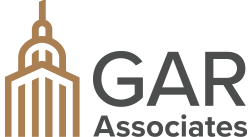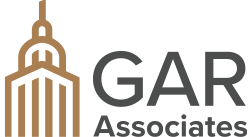Taxes can be a long and confusing process for many – between tax rates, property assessments and tax levies, just how do you get to the numbers on your bill?
To break it into the most basic steps, a jurisdiction such as a school, town or county will create its budget and then subtract all of its other revenue sources to determine how much tax money is needed. This number becomes the tax levy, which is the number taxpayers should focus on, according to Amherst Town Assessor David Marrano: it determines whether taxes as a whole are going up or going down.
After the tax levy is set, property assessments begin to factor in. The tax levy is divided by the total of all taxable assessments in the jurisdiction, then multiplied by 1,000 to get the tax rate. Property owners can find out their own taxes if they multiply the tax rate by how many thousands of dollars their assessment is, minus any exemptions received.
At this point of the process, Marrano compared the tax levy to a pie. “[The assessor’s] job is to fairly split up the pie,” he said. “I don’t determine the size of the pie, but my goal is to make sure everybody has their fair share [and is not over- or under-paying].”
To slightly modify an example from ny.gov, imagine Town X has a tax levy of $1 million and a total taxable assessed value of $20 million. So $1 million divided by $20 million is $0.05, which is then multiplied by 1,000 for a tax rate of $50. If a property in Town X had a taxable assessment of $150,000, the owner would determine how many thousands their property is worth – in this case, 150 – and then multiply by the $50 tax rate for a total tax bill of $7,500.
So why do taxes increase from year to year? The short answer is higher tax levies, which means increased expenses or decreased revenue.
“The misconception is [if] you do a [reevaluation], it raises taxes,” Marrano said. But in truth, taxes rise or fall due to changes in the tax levy even in years without a reevaluation.
To better understand how these numbers come together, imagine that every property in Town X has its taxable assessed value doubled, and the town still has the $1 million levy from the previous example. A total taxable assessed value of $40 million means the tax rate is $25 instead of the previous example’s $50. Property owners may think this means a decrease in taxes, but property values rose proportionately – the formerly $150,000 property is now worth $300,000. Since the levy is the same and the property is still the same percentage of the town’s taxable assessed value, the owner still owes $7,500 even though the tax rate decreased.
The real confusion happens when the levy is increased at the same time as property reevaluations. “I’ve seen people try to hide behind a [reevaluation] and say ‘we didn’t raise your tax rate,’” Marrano said. “Well, that’s not what you’re looking at. You always want to focus on the levy.” For example, if Town X increased its levy to $1.5 million with a taxable assessed value of $40 million, the tax rate would be $37.50 – still a lower rate than the original example’s $50. But at its new $300,000 value, the home is still worth the same portion of Town X’s assessed value, and the property owner owes $11,250. The property owner’s taxes would not have increased if the levy remained the same, but without crunching the numbers, it would look like the reevaluation caused the increase. Of course, this is an oversimplification in some ways; since properties do not all increase in value at the same rate, a property may become a higher or lower percentage of the municipality’s value after reevaluations align the assessment with what the property is actually worth.
The tax levy is also subject to a tax cap in NYS. The rough idea is limiting its growth to the rate of inflation, with a 2% maximum. But several factors could result in a higher tax cap, according to Amherst Town Comptroller Daryl Bramer, such as tax base growth, carryover of an unused portion of the levy from last year, specific exclusions for schools or local governments and more. The cap can also be overridden by schools if 60% of the public votes in favor of the budget and by local governments if 60% of the governing body’s voting power approves – meaning a town board, village board, etc.
According to Amherst Track Us, “In the next few weeks, Erie County will be sending corrected 2020 real property tax statements followed by a refund check. Note that any tax refund valued at $5.00 or less will receive a credit on their 2021 county tax bill.” Questions on your real property tax statement or refund can be directed to Erie County Real Property Tax Services at 858-6954.
Published by The Amherst Bee




